Rosaceae - Rose Family
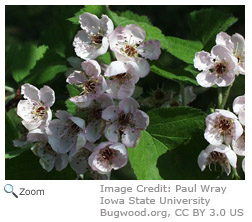 There are about 3,000 species of trees, herbs, shrubs and vines in this family. Most plants have alternate leaves. Plants include roses, cinquefoils, mountain ash,
hawthorn, strawberries, blackberries, raspberries, apples, pears, peaches, cherries, apricots, almonds, quinces, chokecherry and plums. There are about 3,000 species of trees, herbs, shrubs and vines in this family. Most plants have alternate leaves. Plants include roses, cinquefoils, mountain ash,
hawthorn, strawberries, blackberries, raspberries, apples, pears, peaches, cherries, apricots, almonds, quinces, chokecherry and plums.
Saxifragaceae - Saxifrage Family
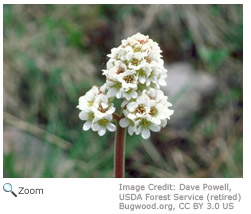 There are over 500 species of herbs in this family. Plants in this family have alternating leaves and flowers with four or five petals that grow in clusters. Plants in this family grow in a wide variety of habitats, but are most common in mountainous and arctic regions. Some are adapted to grow in rocky places, many grow in moist woodlands and some are adapted for dry environments. Plants include astilbe,
saxifrage, alum root, bishop's cap and pickaback plant. There are over 500 species of herbs in this family. Plants in this family have alternating leaves and flowers with four or five petals that grow in clusters. Plants in this family grow in a wide variety of habitats, but are most common in mountainous and arctic regions. Some are adapted to grow in rocky places, many grow in moist woodlands and some are adapted for dry environments. Plants include astilbe,
saxifrage, alum root, bishop's cap and pickaback plant.
Cunoniaceae
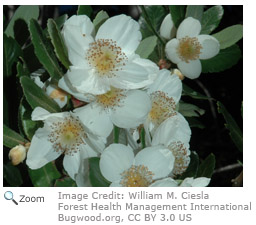 This family of trees and shrubs can be found in Australia and New Guinea, and South America. The Ulmo tree (Eucryphia cordifolia) is a member of this family. It is found in Chile and Argentina and is threatened by development and logging. This family of trees and shrubs can be found in Australia and New Guinea, and South America. The Ulmo tree (Eucryphia cordifolia) is a member of this family. It is found in Chile and Argentina and is threatened by development and logging.
Chrysobalanaceae-Coco Plum Family
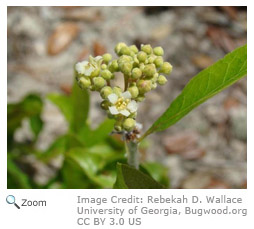 There are about 400 species in this family of trees and shrubs. Most are found in the Amazon. The gopher-apple, one of the species foudn in this family, is found in pinelands and coastal thickets in the southeastern United States. There are about 400 species in this family of trees and shrubs. Most are found in the Amazon. The gopher-apple, one of the species foudn in this family, is found in pinelands and coastal thickets in the southeastern United States.
|
|
Hydrangeaceae -Hydrangea Family
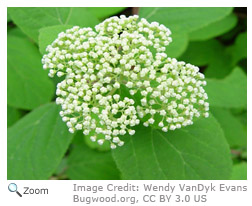 This family has about 260 species of small trees, shrubs, vines and herbs. They are found in tropical, subtropical and north temperate regions. Plants include hydrangea and syringa. This family has about 260 species of small trees, shrubs, vines and herbs. They are found in tropical, subtropical and north temperate regions. Plants include hydrangea and syringa.
Crassulaceae - Stonecrop Family
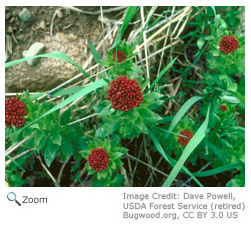 There are about 900 species of herbs and shrubs in this family. Most are found in arid and temperate regions of southern Africa, southern Asia and the Mediterranean. Most species have thick leaves and clusters of red, yellow or white flowers. Plants include stonecrop, houseleek, pennywort, bryophyllum and echeveria. Many species are cultivated as house plants and in gardens. There are about 900 species of herbs and shrubs in this family. Most are found in arid and temperate regions of southern Africa, southern Asia and the Mediterranean. Most species have thick leaves and clusters of red, yellow or white flowers. Plants include stonecrop, houseleek, pennywort, bryophyllum and echeveria. Many species are cultivated as house plants and in gardens.
Grossulariaceae - Gooseberry Family
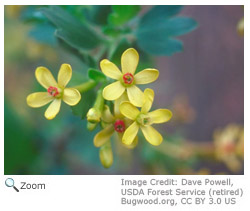 There are about 200 species of shrubs in this family. There are two sub-families in the group, gooseberries and currants. Gooseberry plants are prickly and have single flowers. Currants have no spines and their flowers grow in clusters. Plants include the European gooseberry, the orange gooseberry, the American gooseberry, black currant, buffalo currant, red currant, golden current and the alpine currant. The berries of many plants in this species are edible and are used in jams and jellies. There are about 200 species of shrubs in this family. There are two sub-families in the group, gooseberries and currants. Gooseberry plants are prickly and have single flowers. Currants have no spines and their flowers grow in clusters. Plants include the European gooseberry, the orange gooseberry, the American gooseberry, black currant, buffalo currant, red currant, golden current and the alpine currant. The berries of many plants in this species are edible and are used in jams and jellies.
|
 There are about 3,000 species of trees, herbs, shrubs and vines in this family. Most plants have alternate leaves. Plants include roses, cinquefoils, mountain ash,
hawthorn, strawberries, blackberries, raspberries, apples, pears, peaches, cherries, apricots, almonds, quinces, chokecherry and plums.
There are about 3,000 species of trees, herbs, shrubs and vines in this family. Most plants have alternate leaves. Plants include roses, cinquefoils, mountain ash,
hawthorn, strawberries, blackberries, raspberries, apples, pears, peaches, cherries, apricots, almonds, quinces, chokecherry and plums.






